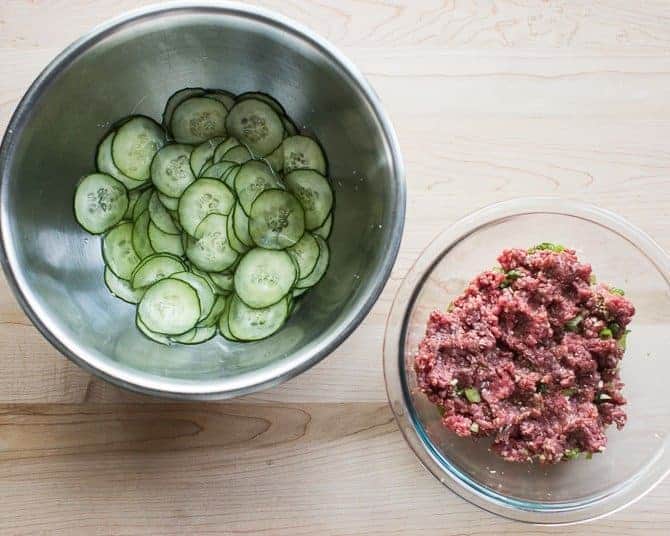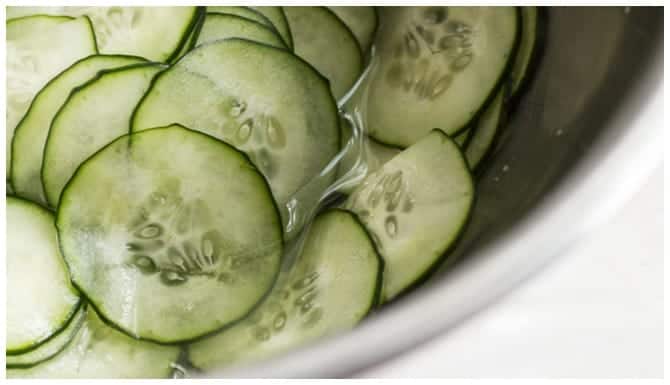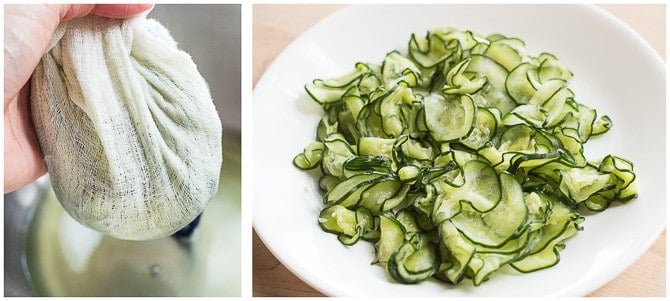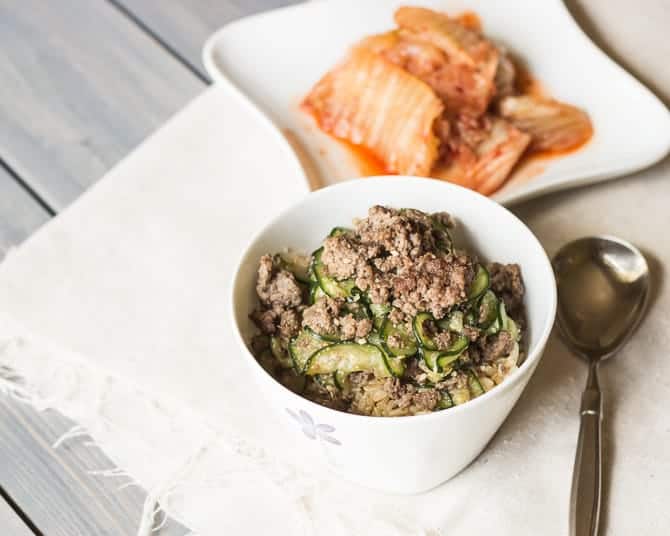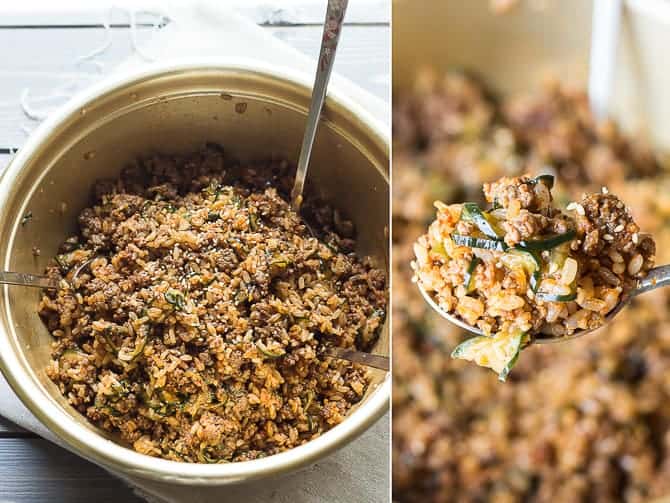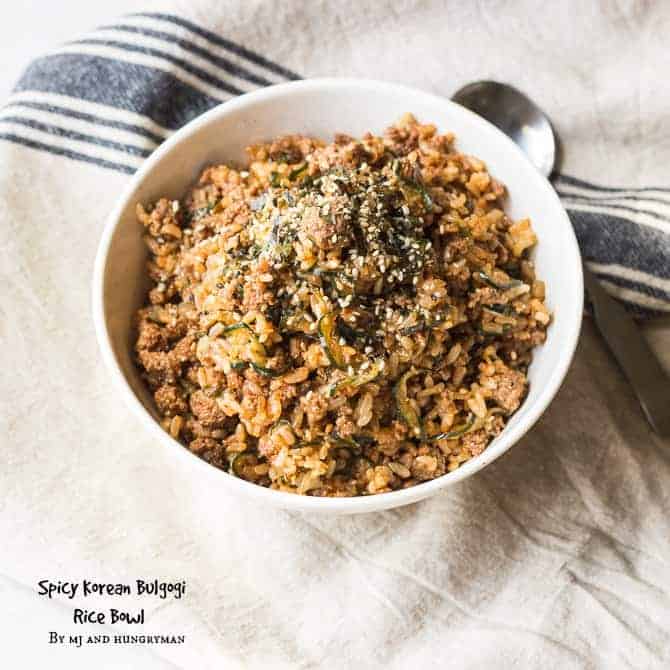A traditional Korean meal normally consists of rice, various vegetable side dishes, and a soup or stew of some kind. And by traditional I mean for my parents’ generation and the ones before them. In fact, to this day my dad must have all these components in his meal to feel satisfied (sorry mom…). The younger generation, however, is perfectly content (or am I just speaking for myself here?) with a bowl of rice, a side of kimchi, and some “gim” or roasted seaweed. Since a wide array of side dishes or “banchan” are typically prepared throughout the week in the Korean home, it’s not uncommon for bibimbap to show up on the dinner table at some point in an effort to essentially clean up the fridge. That’s my kind of cooking.
In that regard, there’s really no recipe to making bibimbap. Just get a large bowl, throw in all the leftover vegetables and a protein source of your choice, mix in heaping spoonfuls of “gochujang” or red pepper paste, add some sesame oil (just when you think you’ve added enough, pour in some more), and just dig in! Since I haven’t made a Korean meal in a long time and didn’t feel like going through the extra steps of preparing the vegetables just for this one dish, I decided to keep it simple: Marinate some ground beef. Pickle some cucumbers. 10 minutes. Done.
Pickling the cucumbers is super easy! First slice them really thinly (pictured above). If you don’t have a mandolin…what are you doing?! You must get one NOW! Place the cucumber slices in a large bowl, and add salt and water. This step is really important as it will help draw out all the water from the cucumbers and make them extra crunchy. You’ll see! After about 5 minutes, place them in a cloth and squeeze the heck out of them. Make sure to drain out as much liquid as possible.
As for the meat, I used a 93% lean ground beef, massaged it with a quick and simple bulgogi marinade, let it sit for about 10 minutes, and cooked it in a skillet over medium-high heat. Once the meat has cooled, throw in the cucumbers, and combine with some sesame oil and toasted sesame seeds. You can serve it on top of some rice and kimchi if you don’t want to go the bibimbap route. And despite the Hungryman’s constant requests for rice as white as snow, I used my veto power and brown rice entered the picture. I won’t lie. Using white rice would make the mixing a lot easier and would just melt in your mouth. With the brown rice you have to exercise those jaw muscles a bit more, but what can I say? My heart follows the whole grains. As I mentioned earlier, some spiciness was in order, so bibimbap was the logical choice for me. It seriously is a bulletproof recipe. There’s no way on earth that you can mess it up…unless, of course, you don’t have sesame oil. Can you tell I take my sesame oil very.very seriously? Oh, I guess you need the red pepper paste too. In my opinion, bibimbap MUST be served in a large metal bowl. If you are Korean or have hardcore bibimbap-loving Korean friends, you know what I’m talking about here. Whether it’s the stainless steel variety of that golden-colored aluminum kind, somehow eating it from this magical bowl makes the contents 100 times tastier and conjures up all kinds of fond memories.
Once everything’s mixed, grab your loved ones and some extra spoons and dig in! And yes, I mean from the same bowl. You should know that we, Koreans, are not concerned with the infamous double dip. Nope. In fact, the concept of sharing germs during mealtime is embraced. Perhaps this is why I have such a strong immune system. Well..we’re all alive and kicking, and that’s what matters ;). Now if the personal hygiene habits of your dining companion(s) are in question or you’re just trying to practice portion control, go ahead and make yourself a separate bowl. Sprinkle some roasted seaweed flakes to ward off the loneliness. Even perhaps a runny egg? Whatever you decide to do, I think you’re going to enjoy this super easy recipe!

